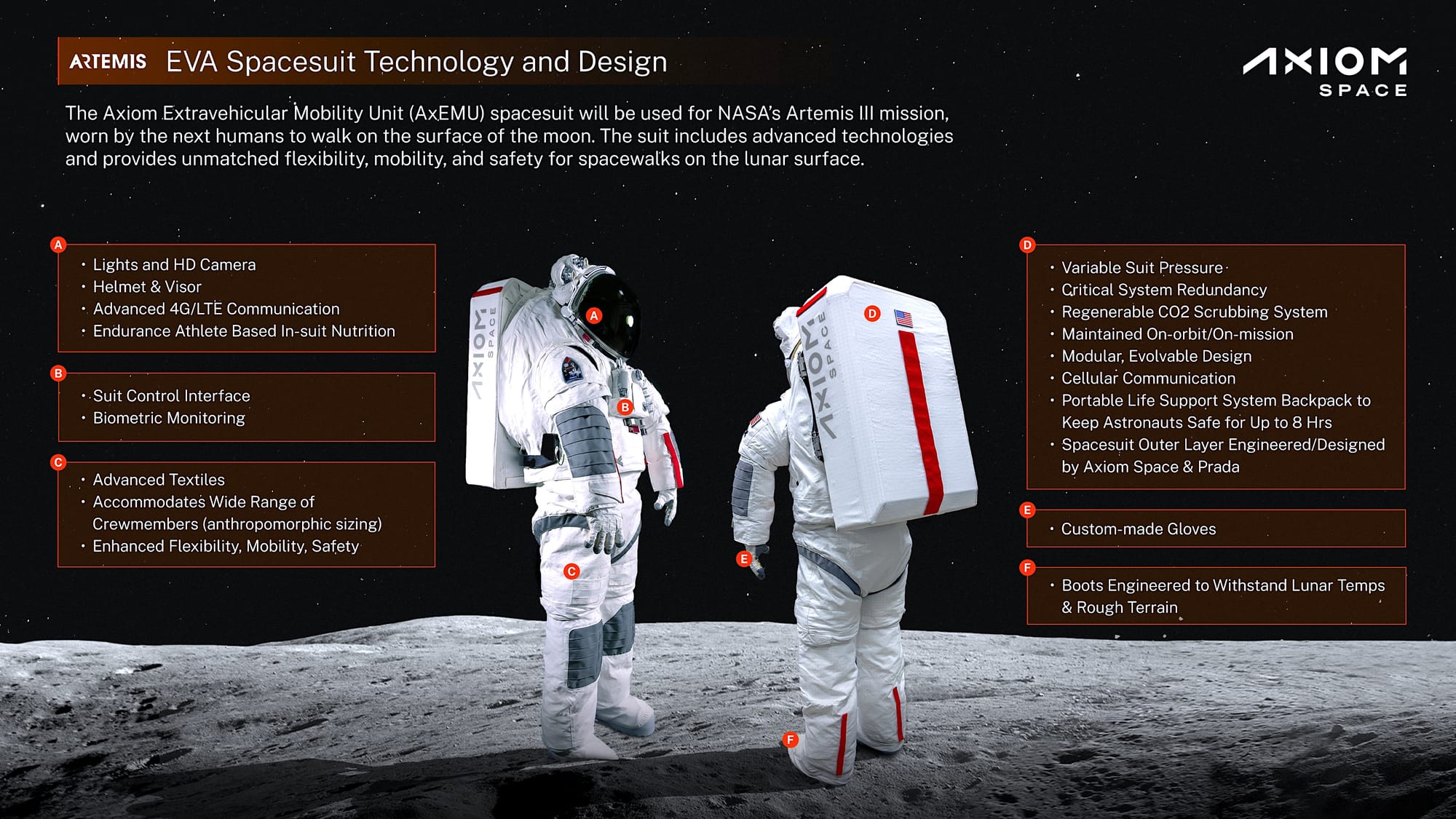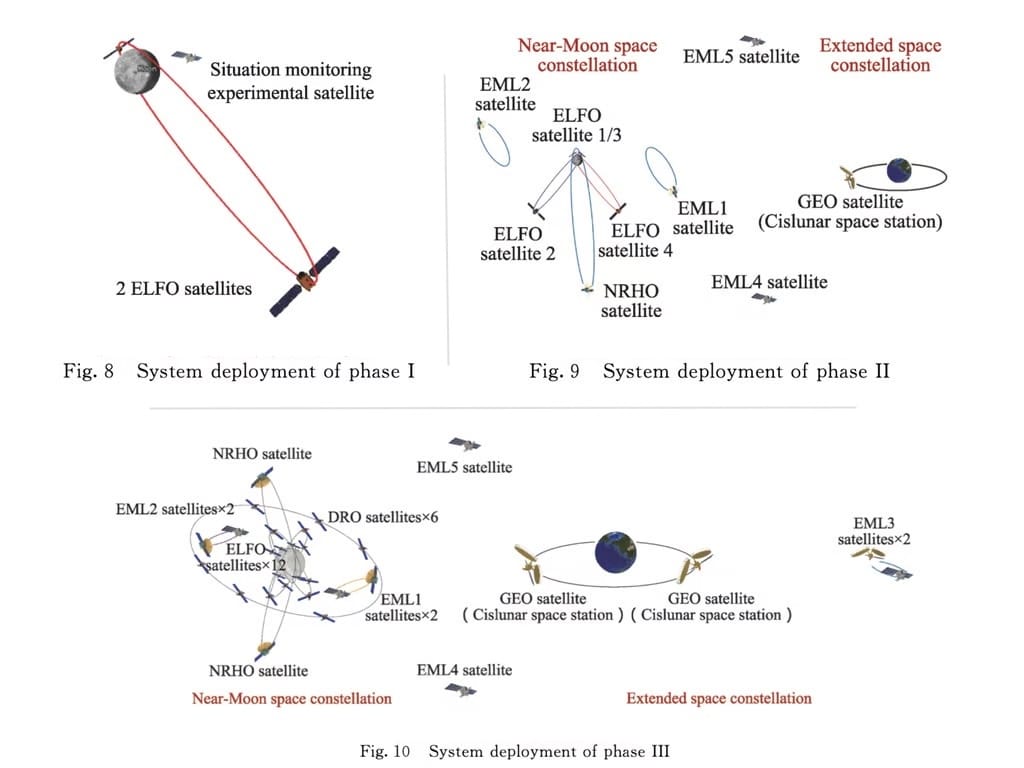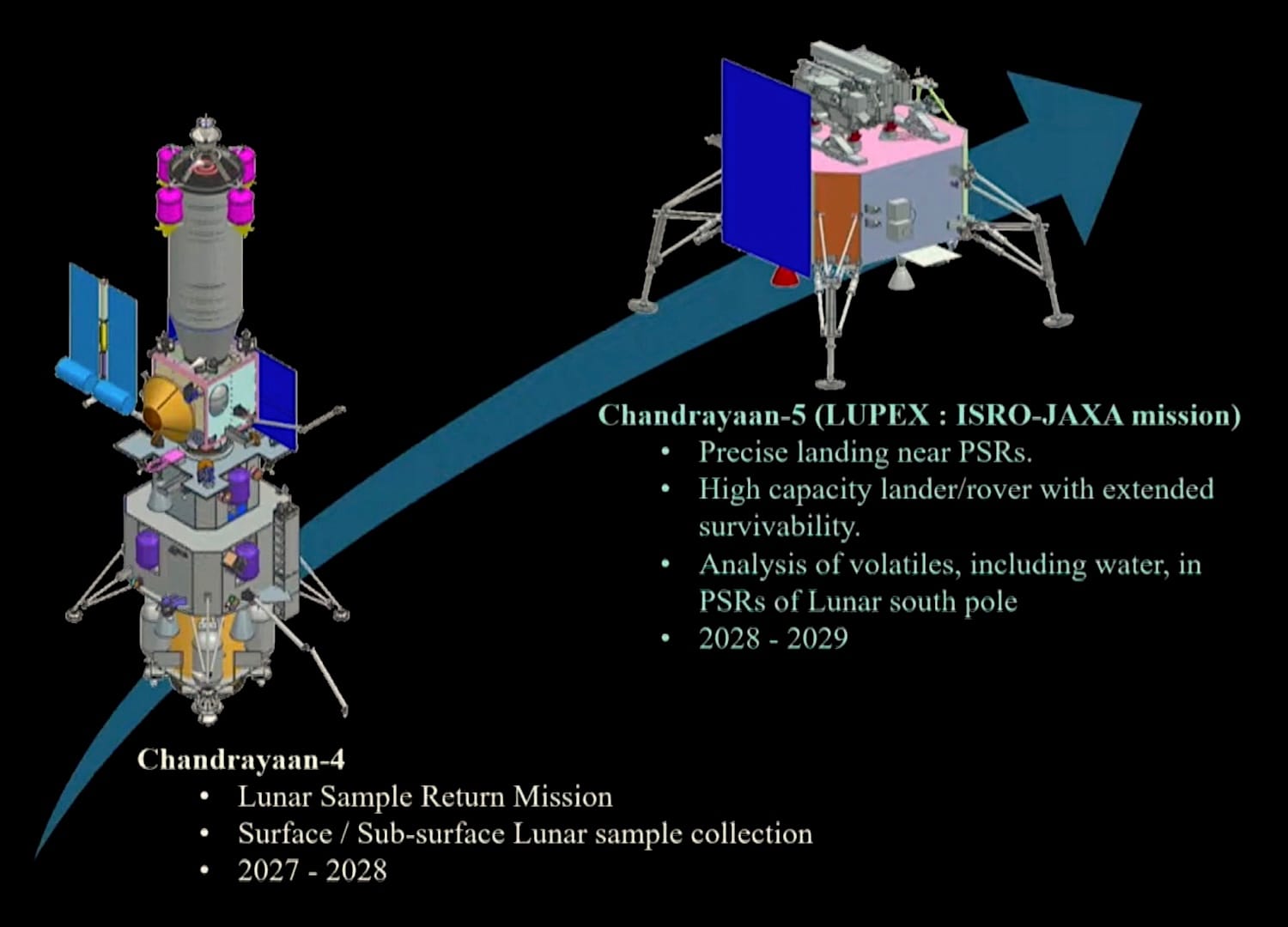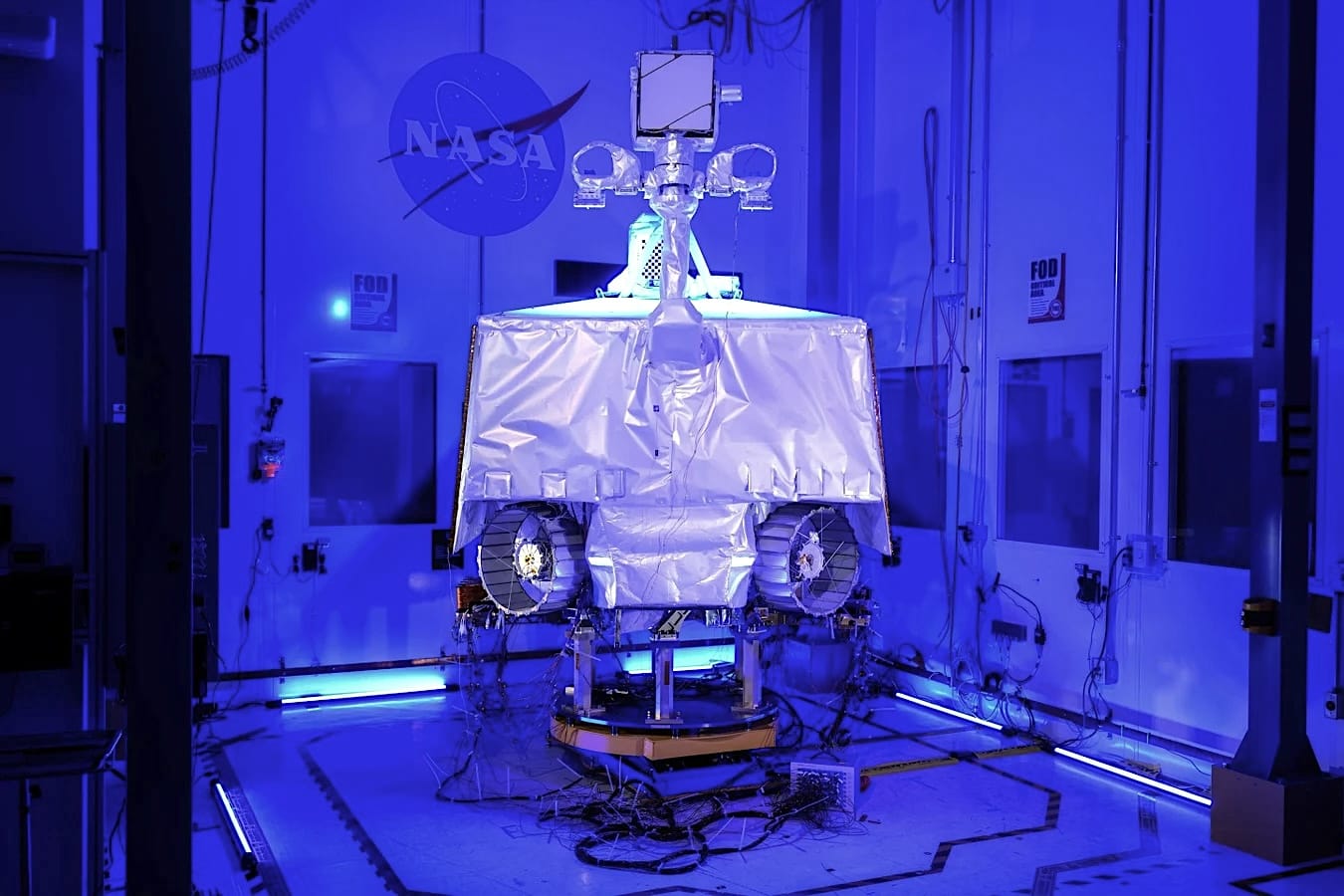Moon Monday #198: Suit up to walk under Moonlight, and grab global mission updates
First look at the Artemis Moonwalking suit

Following China’s unveiling of its lunar spacesuit last month, Axiom Space has revealed the latest design of its AxEMU suit that astronauts will wear on NASA’s crewed Artemis III lunar surface mission later this decade. The first-time unveiling of the suit exterior was done at 2024’s International Astronautical Congress (IAC), and comes a year after Axiom partnered with Italian luxury brand Prada to progress on the same. The suit remains a pacing item for Artemis III alongside SpaceX’s Lunar Starship. As a result, Axiom Space has purportedly prioritized the suit’s development lately over its commercial ISS-LEO human spaceflight business. Jeff Foust reports that suit has not yet passed the critical design review phase—only after which manufacturing for flight can begin.
The AxEMU suit provides good mobility, health monitoring, nutrition, redundancy in several systems, a back hatch to climb into and close the suit by oneself, a HD helmet cam, and even light bands. The company announced in August that it is partnering with Nokia to add 4G/LTE communications to the suit to offer astronauts a redundant communication option as well as increased bandwidth for streaming astronaut Moonwalks. The latter will help mission scientists on Earth better inform astronauts which rocks to select for inspection and return to Earth. Relatedly, Axiom has been testing how well the suits could allow astronauts to do tasks related to handling samples on the Moon.
The AxEMU suit builds over NASA’s xEMU design. NASA made available its xEMU research and even human resources to accelerate development of the AxEMU suits while reducing risk. NASA’s Technical Reports Server provides development updates surrounding the xEMU suits. However, one should note that NASA only defined the technical and safety standards for the suits but doesn’t specify how to meet them so as to encourage innovative solutions. Here are some notable NASA requirements for the suits.
- Support six two-person Moonwalks on the Moon’s south pole during initial Artemis missions. After astronauts come back from excursions, the suits should release less than 100 grams of potentially harmful lunar dust into the cabin for safety.
- Support more and longer duration spacewalks on latter Artemis missions to enable sustained US presence on the Moon. My note: Although currently, just like the Chinese suits, the AxEMU suits can allow astronauts to explore the lunar surface for about eight hours at a time.
- Since NASA wants astronauts to venture inside polar permanently shadowed regions to study and sample water ice, the suits must let astronauts enter such areas and function nominally for at least 2 hours despite temperatures there persisting well below -180 degrees Celsius.
Moonlight in motion, and contrasting Queqiao

ESA is advancing their Moonlight constellation via a Telespazio-led industry consortium. This European constellation of five satellites for lunar navigation and communications (navcom) will receive support from UKSA and ASI too, and majorly serve hardware on the lunar south pole region.
The launch of UK’s SSTL-built, 280-kilogram Lunar Pathfinder orbiter in 2026, onboard Firefly’s second lander part of NASA’s CLPS program, will constitute ESA’s first Moonlight element. Pathfinder will provide high-bandwidth communications to lunar hardware for eight years. ESA signed a contract with SSTL in September 2021 worth $23.5 million to get communications services from Lunar Pathfinder. As such, ESA will be Moonlight’s anchor customer but expects the consortium to seek lunar navcom customers globally.
The remaining four Moonlight satellites will focus on providing navigation services to lunar landers, orbiters, and rovers. ESA hopes to launch them by end of decade. NASA, JAXA, and ISRO are also expected to launch lunar navcom satellites around that time. Notably, these are expected to interoperate thanks to the “LunaNet” standard the agencies have agreed to follow. As such, lunar hardware from companies and agencies of these countries might be able to tap into a larger network instead of just their own.
It also might be how these countries catch up with China’s lead in lunar navcom. As part of a broader strategy for China’s upcoming full-fledged navcom constellation, the country has already deployed two communications relay orbiters: Queqiao 1 and Queqiao 2, which served the Chang’e 4 and Chang’e 6 missions respectively on the Moon’s farside. Queqiao 2 will also relay communications for China’s upcoming Chang’e 7 and Chang’e 8 lunar landers, which CNSA is targeting to launch in 2026 and 2028 respectively.

Furthermore, the Queqiao 2 launch also carried two experimental lunar Tiandu CubeSats to test and verifying technologies to feed into a full-scale navcom constellation. Two more Chinese craft launched earlier this year, DRO-A and DRO-B, are in a Distant Retrograde Orbit at the Moon to specifically test laser-based navigation and timing between the Moon and the Earth-orbiting DRO-L satellite.
Relatedly, in a recent paper published in the Chinese Journal of Space Science, researchers proposed that China should integrate their Queqiao lunar satellites with the existing Earthbound Tianlian ones, which notably serve, among other things, China’s Tiangong space station. As Andrew Jones had highlighted, the proposal’s driving rationale was to substantially improve surface coverage time and area for China’s upcoming ambitious crewed lunar missions leading to a full-fledged Moonbase. It would also allow redundancy if and when China faces ground station availability issues from its Moonbase partners across the globe.
Many thanks to The Orbital Index, Parvathy Prem and Frank Genin for sponsoring this week’s Moon Monday! If you too appreciate my efforts to bring you this curated community resource, support my independent writing.
Chandrayaan updates

A few more details on ISRO’s upcoming Chandrayaan missions have surfaced thanks to the talk by Chandrayaan 3’s Project Director Palanivel Veeramuthuvel at IAC:
- The landing site for the Chandrayaan 4 sample return mission will be somewhere between 85–90° on the Moon’s south pole, putting it squarely in the water-hosting polar region as opposed to the 70°S for Chandrayaan 3. Relatedly, Chethan Kumar recently reported that Chandrayaan 4’s preliminary design review is not yet complete.
- There will be not one but three SPADEX satellite docking missions in Earth orbit—first in circular orbit, then elliptical—to buy down risk for Chandrayaan 4. As a tangent, SPADEX will also reduce risk for the upcoming Gaganyaan human spaceflight missions, particularly for the end-of-decade cargo flight to the International Space Station and one to India’s first space station module.
- The landing site for the ISRO-JAXA LUPEX / Chandrayaan 5 mission will be 89.45°S, 222.85°E, which lies on an elevated ridge connecting the Shackleton and de Gerlache craters. The site has several permanently shadowed regions in its vicinity so the LUPEX rover can directly study the nature, accessibility, and abundance of potential water ice deposits there as intended.
Also see: The actual status of LUPEX / Chandrayaan 5
I was a guest on Carnegie India’s podcast to discuss where India’s Moon exploration plans are heading, and what are the enablers and constraints on the increasingly complex road for ISRO to send an Indian to the Moon. Give it a listen on Spotify, Apple Podcasts, YouTube, or below:
Also see: Communicating space exploration via media roundtables, podcasts, and news outlets
More Moon

- To push back against the ongoing scramble to save NASA’s water-studying VIPER rover mission from getting canceled against budgetary challenges, The Planetary Society held multiple meetings of lunar scientists with congressional staff—including those in the appropriations subcommittees that handle NASA’s budget—so as to vouch for reinstating the mission. The discussions were backed by a letter signed by more than 5,000 space experts. I hope VIPER ultimately lies where it belongs—the Moon.
- On October 14, national representatives from 42 of the 45 signatories of the US-led Artemis Accords principles convened at the IAC for a high-level meeting. NASA’s release of the meet states that the signees “agreed on recommendations on non-interference, interoperability, release of scientific data, long-term sustainability guidelines, and registration to advance implementing the Artemis Accords.” It’s not public what these agreements are exactly. NASA also stated that work is progressing on a database to host high-level information about all planned lunar surface missions by Accords signatories for transparency.
- ispace US says that after serving as communications relays for science operations of the Draper-led Moon mission part of NASA’s CLPS program targeting a 2026 launch, their Blue-Canyon-built lunar satellites Alpine and Lupine will be available commercially for other lunar hardware or hosted payloads to utilize. ispace US is providing the lander and ground communications for the Draper-led CLPS mission on the Moon’s farside. This mission has been a driver of capital raises for ispace but the silver lining for science is that it hasn’t cost significant additional money to NASA unlike the case of several other CLPS missions including the first ones that flew this year from Astrobotic and Intuitive Machines.
- At the 2024 IAC, ESA revealed that it’s making the European Lunar View module intended to be attached to the upcoming NASA-led Gateway lunar orbital habitat a little over 50% larger and about that much more massive too. To be launched on the Artemis V mission around end of decade, Lunar View will provide additional fuel for the Gateway, and host 1500 kilograms of astronaut supplies and cargo. It will also have attachment points for CSA’s Canadarm3 robotics servicing system. Lunar View is named so because its windows will provide astronauts at the Gateway breathtaking 360° views of space, our Moon, and Earth. Thales Alenia France, the prime contractor for Lunar View, is in the preliminary design phase of the project.
